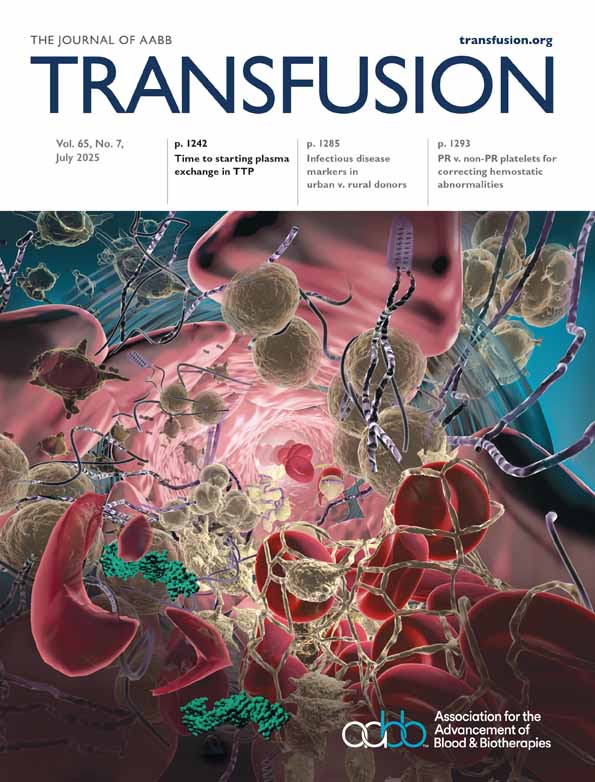NA gene frequencies in the German population, determined by polymerase chain reaction with sequence-specific primers
Abstract
BACKGROUND: The granulocyte antigens NA1 and NA2 are often targets of granulocyte antibodies causing immune neutropenia. Currently, NA typing relies on the properties of the typing sera or antibodies and the techniques used. Therefore, the technique of polymerase chain reaction with sequence-specific primers (PCR-SSP) was adapted for DNA-based NA typing and was used for determining the NA gene frequencies in the German population. STUDY DESIGN AND METHODS: The genomic DNA of 160 unrelated healthy individuals was typed for NA1 and NA2 by PCR-SSP. In 60 granulocyte samples, the NA phenotype was additionally determined by the antigen capture assay and the granulocyte immunofluorescence test (GIFT) and correlated with the genotyping results. RESULTS: Results of the antigen capture assay and PCR-SSP correlated precisely, whereas nine individuals were typed heterozygous only by GIFT. The gene frequencies were 0.35 for NA1 and 0.65 for NA2. CONCLUSION: The NA2 gene is more frequent in the German population than the NA1 gene, as determined by genotyping using PCR-SSP. In contrast to GIFT, which showed an error rate for NA typing of 15 percent, PCR-SSP and the antigen-capture assay are more reliable methods of NA typing of granulocytes.
Abbreviations:
-
- bp =
-
- base pairs;
-
- FcRIII =
-
- Fc-γ-receptor III;
-
- GIFT =
-
- granulocyte Immunofluorescence test;
-
- HGH =
-
- human growth hormone;
-
- MAIGA =
-
- monoclonal antibody-specific Immobilization of granulocyte antigens (assay);
-
- PCR-SSP =
-
- polymerase chain reaction with sequence-specific primers.




